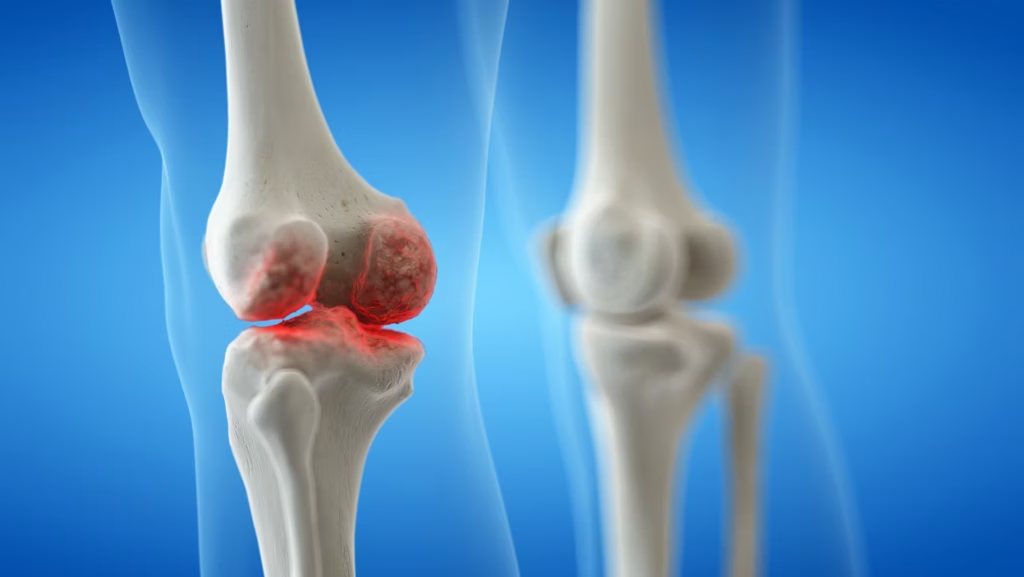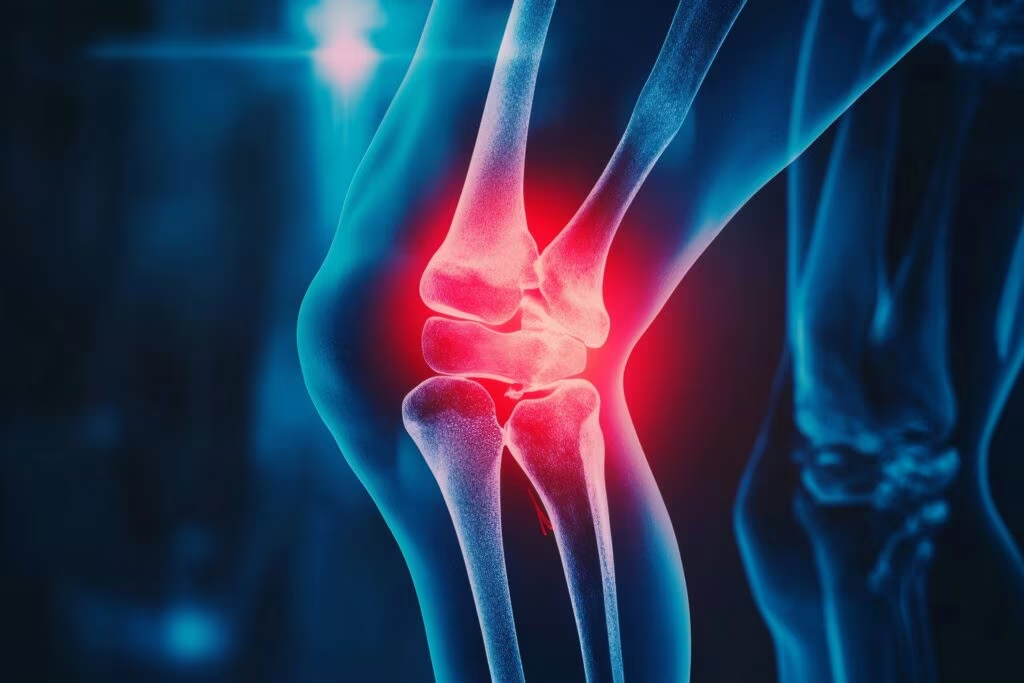Search Results
Showing Results for inflammation

Metabolic dysfunction-associated steatohepatitis (MASH) is a progressive liver disease driven by fat build-up and immune activation, often linked to obesity and diabetes. Emerging therapies target both metabolic and immune pathways, showing promise in reducing inflammation, improving liver function, and reversing fibrosis. These advances offer hope for better management of this complex disease.

The American College of Gastroenterology’s 2025 Crohn’s disease guidelines introduce key advancements in personalized care, diagnostics, and treatment. Highlights include genetic testing to guide therapy, adoption of intestinal ultrasound for non-invasive monitoring, and the inclusion of new biologics. Emphasizing shared decision-making and holistic care, the guidelines aim to improve outcomes by tailoring strategies to each patient’s unique profile and preferences.

Dr. Vinod Ravindran (Centre for Rheumatology, Calicut, Kerala, India) shares his highlights from RheumaPreg 2025, held in Vienna. The conference covered the full spectrum of pregnancy management in autoimmune rheumatic diseases. Here, he reflects on key insights from expert-led sessions on fertility, immunosuppression, lupus care, and postpartum outcomes.

In the interview, Dr Paul Pockros discusses his presentation from DDW 2025 on the SPRING study (NCT04595825), which evaluated CM-101, a novel anti-CCL24 monoclonal antibody, in adults with primary sclerosing cholangitis (PSC). With no FDA-approved treatments for PSC, CM-101 showed promising safety, tolerability, and biomarker improvements over 48 weeks, supporting advancement to phase 3 trials.

Osteoarthritis is increasingly recognised as a heterogeneous disease with diverse clinical phenotypes and molecular endotypes. In this expert Q&A, Professor Ali Mobasheri discusses how precision medicine—through clinical phenotyping and molecular endotyping—can guide targeted therapies, accelerate the development of disease-modifying treatments, and transform OA management into a personalised, proactive approach that improves patient outcomes.

At the 2025 WCO-IOF-ESCEO congress, Professor Philip Conaghan presented the safety and efficacy findings from the phase 2 study of LEVI-04 for the treatment of adults with knee osteoarthritis. LEVI-04 is a first-in-class, NT-3 inhibitor, which works by targeting the inflammatory pathways involved in joint degeneration and selectively inhibiting pro-inflammatory cytokines.

The European Commission has approved upadacitinib for treating giant cell arteritis (GCA) in adults. This marks the first oral JAK inhibitor approved for GCA in the EU. Backed by the findings from the phase III SELECT-GCA trial, upadacitinib offers a new option for managing this chronic inflammatory disease in adults.

Itolizumab, an investigational anti-CD6 monoclonal antibody, has shown promising results in a phase II clinical trial for patients with moderate to severe ulcerative colitis. Designed to target the CD6-ALCAM pathway, a mechanism implicated in gastrointestinal inflammation, itolizumab was reported to achieve clinical remission rates comparable to adalimumab.

The use of immune checkpoint inhibitors (ICIs) in treating cancer has greatly improved survival outcomes, particularly in patients with advanced disease for whom successful treatment options have previously been limited. For example, in patients with metastatic melanoma, the median survival ...

Hypermobility spectrum disorders (HSDs) refer to a group of conditions characterized by an increased range of motion in joints beyond the normal limits, often due to connective tissue laxity. More stringent criteria are applied in the diagnosis of hypermobile Ehlers–...

Recent advancements made in understanding the pathology of inflammatory skin conditions have enabled JAK inhibitors, initially developed for haematology over 20 years ago, to be investigated for dermatological use. In this episode, Dr William (Bill) Damsky discusses JAK inhibitors’ journey from proof-of-concept to treating a wide range of skin conditions, their future impact on rare diseases and the debate around safety.

On September 23, 2024, the U.S. Food and Drug Administration (FDA) approved bimekizumab-bkzx (BIMZELX®, UCB) for the treatment of active psoriatic arthritis (PsA), active non-radiographic axial spondyloarthritis (nr-axSpA) with objective signs of inflammation and active ankylosing spondylitis (AS).1 This makes bimekizumab-bkzx ...

Eosinophilic oesophagitis (EoE) is a chronic, immune-mediated inflammatory disease of the oesophagus that is progressive in nature and increasingly prevalent worldwide.1 The condition is driven by antigen-induced type 2 inflammation, leading to the infiltration of eosinophils, which causes esophageal dysfunction and ...

A new study published in RMD Open has revealed that individuals with rheumatoid arthritis (RA) are significantly more likely to experience cognitive impairment. The study, which involved 70 RA patients and 70 matched healthy controls, showed that 60% of RA patients scored below the threshold for cognitive impairment on the Montreal Cognitive Assessment (MoCA), compared to 40% of the control group. This cognitive decline was most pronounced in visuospatial-executive function, memory and abstraction.

The EASL 2024 meeting offered a great opportunity for hepatologists from around the world to discuss the latest data and tackle challenges in liver disease. Metabolic dysfunction-associated steatohepatitis (MASH) was a hot topic, with several exciting studies making waves. This article ...

Beginning with the Canadian Early Arthritis Cohort (CATCH) we explore non-articular pain in patients with early RA and discuss how the findings could support a link between disease activity and non-articular pain, as well as confirm the need to intervene. Staying in early RA, we then discuss the two-year data PRAIRI trial data and what they demonstrated in terms of the impact of rituximab on the quality of life of patients with pre-RA.

In our late-breaking abstract coverage, we spoke with Prof. Denis Poddubnyy from Charité-Universitätsmedizin Berlin to discuss key data from EULAR 2024 on axial spondyloarthritis (axSpA). We first explored the open-label extension results of the phase 3 BE MOBILE 2 study (NCT04436640), which assessed bimekizumab's impact on 2-year radiographic progression in the spine of patients with radiographic axSpA. Hypothesized to offer superior inhibition of bone formation due to its dual action on IL-17A and IL-17B, bimekizumab's findings were compared with other treatments like ixekizumab, upadacitinib, secukinumab, and certolizumab pegol, highlighting implications for clinical practice. Additionally, we examined a recent study by Berg et al., which compared remote monitoring and patient-triggered monitoring to traditional face-to-face consultations. The discussion focuses on how these findings could influence daily practice, patient outcomes, and healthcare resource management.
Latest articles videos and clinical updates - straight to your inbox
Log into your Touch Account
Earn and track your CME credits on the go, save articles for later, and follow the latest congress coverage.
Register now for FREE Access
Register for free to hear about the latest expert-led education, peer-reviewed articles, conference highlights, and innovative CME activities.
Sign up with an Email
Or use a Social Account.
This Functionality is for
Members Only
Explore the latest in medical education and stay current in your field. Create a free account to track your learning.


